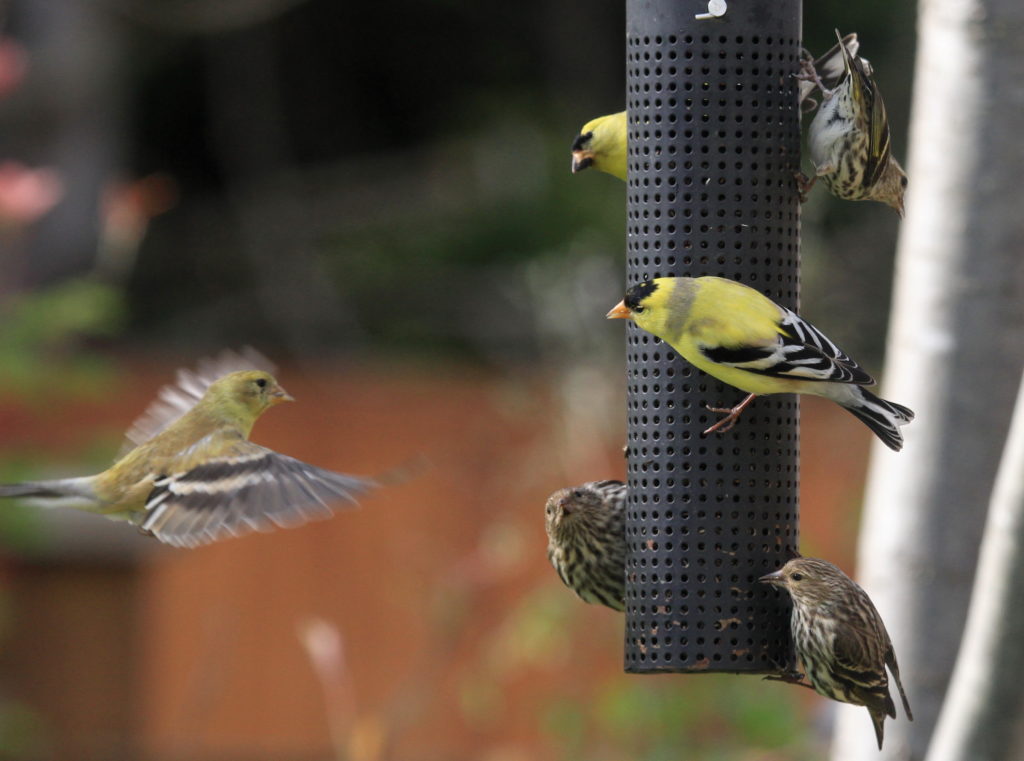Support Us
Since 1979 more than 140,000 animals have been treated by Wildlife Rescue.
Thanks to the support of individuals like you, Wildlife Rescue can provide a lifeline for animals in distress.
Many of us like to give wildlife a helping hand by providing bird feeders over the cold fall and winter months. With various avian diseases spreading during these months, it is important to be mindful about offering food in a safe way. Ultimately, the goal is to do what is best for wildlife!
Wildlife Rescue notices an increase in birds presenting with contagious avian diseases, such as salmonella and conjunctivitis, during the colder months. Diseases can easily spread among birds sharing feeders because feeders attract large numbers of birds to one location.

We can’t tell a sick bird not to come to the buffet, so sometimes it’s best just to postpone the dinner party before anyone else gets sick.
If you notice sick birds in your backyard, we recommend cleaning your feeders and putting them away for at least 3-4 weeks and until sick birds are no longer present in your backyard. This way you can help minimize the spread of avian diseases.
Here are a few symptoms to look out for:
If you are choosing to offer a feeder, we recommend taking the following steps to help keep wildlife safe:
Please note hummingbird feeders have a different set of recommendations.
Including native plants in backyard gardens is another effective way to provide food and shelter to wild birds over the fall and winter months. You will attract more wildlife visitors to your yard without needing to maintain a feeder.
These are some native species you can plant in BC:
Have you seen birds showing signs of disease, or do you have any questions? Reach out to our Support Centre for support and guidance here.
Thank you for looking out for your local wildlife!